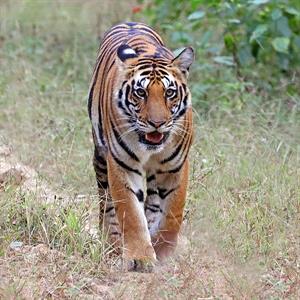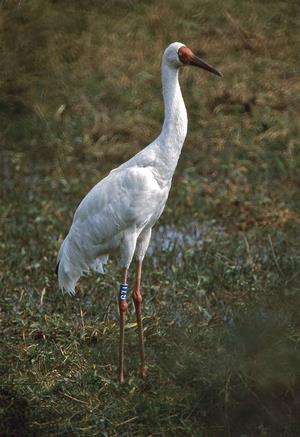
PUMPA - SMART LEARNING
எங்கள் ஆசிரியர்களுடன் 1-ஆன்-1 ஆலோசனை நேரத்தைப் பெறுங்கள். டாப்பர் ஆவதற்கு நாங்கள் பயிற்சி அளிப்போம்
Book Free DemoAccording to the WWF (World Wildlife Fund), there has been a 60 \ % decrease in size of population of wild animals, birds, fishes, reptiles, and amphibians over the past 40 years. To leave something for future generations, we need to conserve the wildlife now.
Conservation is the protection, preservation, and management of wildlife and natural resources like forest and water.
Conservation of biodiversity is of prime importance and helps protect, maintain and recover the endangered plant and animals species.
Types of conservation:
• In-situ conservation (within habitat)
• Ex-situ conservation (outside the habitat)
In-situ Conservation
Conservation of living resources within their natural ecosystem in which it is present. It is achieved by protecting the natural habitat and maintaining the endangered species in protected areas like national parks, wildlife or bird sanctuary and the biosphere reserves. In India, there are about 73 national parks, 416 sanctuaries and 18 biosphere reserves.
National Parks
National park is an area that is reserved for the betterment of wildlife.
Human activities like forestry, grazing or cultivation, mining, poaching, hunting are not allowed. Private ownership rights are not allowed in national parks. They cover an area of 100 to 500 square kilometers.
A single plant or animal species are protected or preserved. People can enter and view flora and fauna along with the natural landscape of the park. It is used for recreational activities and also for educational purpose.
Some of the national parks found in India:
Name | State | Established year |
Jim Corbett National Park | Uttarakhand | 1936 |
Dudhwa National Park | Uttar Pradesh | 1977 |
Gir National Park | Gujarat | 1975 |
Kanha National Park | Madhya Pradesh | 1955 |
Sundarbans National Park | West Bengal | 1984 |
National Parks found in Tamil Nadu:
Name | Established year | District |
| Guindy National Park | 1976 | Chennai |
| Gulf of Mannar National Park | 1980 | Ramanathapuram |
| Indira Gandhi National Park | 1989 | Coimbatore |
| Mudumalai National Park | 1990 | The Nilgiris |
| Mukurthi National Park | 1990 | The Nilgiris |

Bengal tiger
Satpura National Park:
The first forest reserve present in India, where the finest teak is present is the Satpura forest. There is the presence of rock shelters which are evidences of pre-historic life of human in jungles. The lifestyle of the primitive people who lived long ago were depicted as rock paintings.
Rock paintings depict figures of man fighting, hunting, and playing musical instruments etc. Around 55 rock shelters are identified in the Satpura National park. Wild animals present include tiger, leopard, wildboar, wild buffaloes. Satpura tiger reserve in Satpura National park is part of the Project Tiger.
Migration in birds
Long-distance travel by the birds to escape the extreme environmental condition is called migration.
To escape the extreme winter season, birds travel from other parts of the world to warmer regions like India. Birds and animals migrate to a warmer place during the unfavourable season (when the winter begins) and return back when the winter is over.
Migration in birds is for laying eggs as the weather in the natural habitat will be very cold and inhospitable. Siberian cranes travel from Siberia to places like Bharatpur in Rajasthan, Sultanpur in Haryana, and other wetlands of North-east part of India. They travel to escape the harsh conditions and to get food. The Siberian crane can travel an average of 200 miles on a single day!

Siberian crane
Other migratory birds include Bar-headed goose, Arctic tern, and Surkhab.
Important!
Migratory birds may travel as much as 15000 km to escape the extreme climatic condition!!
How do birds travel to a particular location?
- The migratory birds fly high which use the wind flow, and the cold conditions allow to disperse the heat generated by the flight muscles.
- The birds also have a sense of direction. Some birds also use landmarks to guide them.
- Some of the birds use the sun as a guide during daytime and the stars during the night.
- Some of them use the magnetic field of the earth to find the direction.